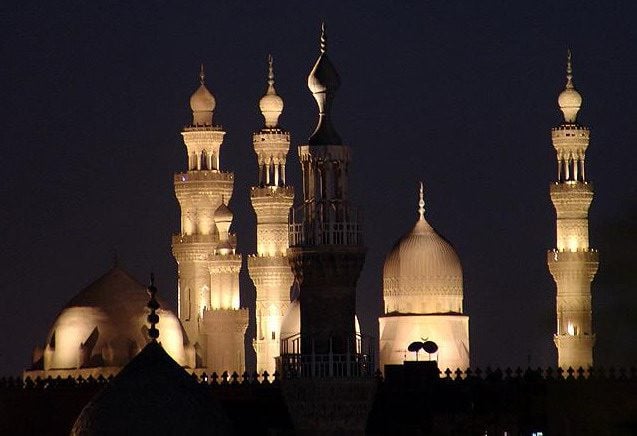
Here’s the first part of an article that I wrote for Richard C. Martin, et al., eds. Encyclopedia of Islam and the Muslim World, 2 vols. (New York: Macmillan Reference USA, 2004), on the subject of “Muslim Identity”:
In Islamic societies, religion, rather than language and ethnicity, has typically defined political, social, and personal identity. Obviously, Muslims have always been aware of linguistic, ethnic, and territorial divisions, but, through much of Islamic history, these have seemed relatively unimportant to them. Their formative past and spiritual ancestry were to be found in the line of prophets and believers chronicled in the Qur’an, prominently including the Prophet Muhammad and his companions, rather than, depending upon where they lived, among the related by spiritually foreign peoples of, say, pharaonic Egypt, or polytheistic Babylonia.
Although the situation has become more complex during the past two centuries, Muslims have traditionally been integrated by their common identity as followers of Muhammad and the Qur’an, and, secondarily, by their allegiance to dynastic rulers (e.g., caliphs and sultans). At least in theory (but very often in fact), Muslims of entirely distinct tongues and genealogies have recognized each other as brothers while rejecting as aliens compatriots who, while sharing both dialect and ancestry, differ in religious affiliation. (In recent years, certain unfortunate consequences of these attitudes—generally reciprocated with at least equal fervor by the non-Muslims involved—have been strikingly illustrated in the Balkans and elsewhere.) Before residents of the region adopted such nineteenth and early-twentieth-century terms as Middle East and Near East, no equivalent vocabulary, and, hence, no such unifying concept of shared geographical identity, seems really to have existed in the area. Until modern times, Turkish had no word for Turkey; the word used today originated in Europe. Arabic still lacks a word for Arabia. On the other hand, such distinctions as that between the dar al-islam (the “abode of Islam” or “of submission [to God]”) and the counterpoised dar al-harb (“the abode of strife” or “of war”) were readily available and far more salient.
It must be understood, of course, that religion in the areas dominated by Islam has commonly included rather more than a mere system of belief and worship, distinct from and possibly subordinated to national and political allegiances. Those of Muslim background often retain a shared communal identity even in instances where Islamic faith and practice have been abandoned.
Initially, of course, the fact that the Qur’an had been revealed in Arabic, while obviously useful to its first hearers, could not forge a unique identity. All of its original audience, after all, both believers and unbelievers, were Arabic-speakers. With the spread of Islam westward to Iberia and eastward to India, however, the Qur’an’s Arabic character (emphasized in the book itself at 12:2; 13:37; 16:103; 20:113; 26:195; 39:28; 41:3; 42:7; 43:3; 46:12) marked the Arabs off as a favored nation whose ethnic identity was intimately connected with the identity most of them shared as Muslims. Arabic came to be the principal language of a vast civilization that, although it included considerable numbers of non-Muslims who enjoyed the status of protected dhimmis, had been formed and shaped by Arabo-Islamic sensibilities. In this were sown the seeds of later Arabic nationalism.
Posted from Victoria, British Columbia












